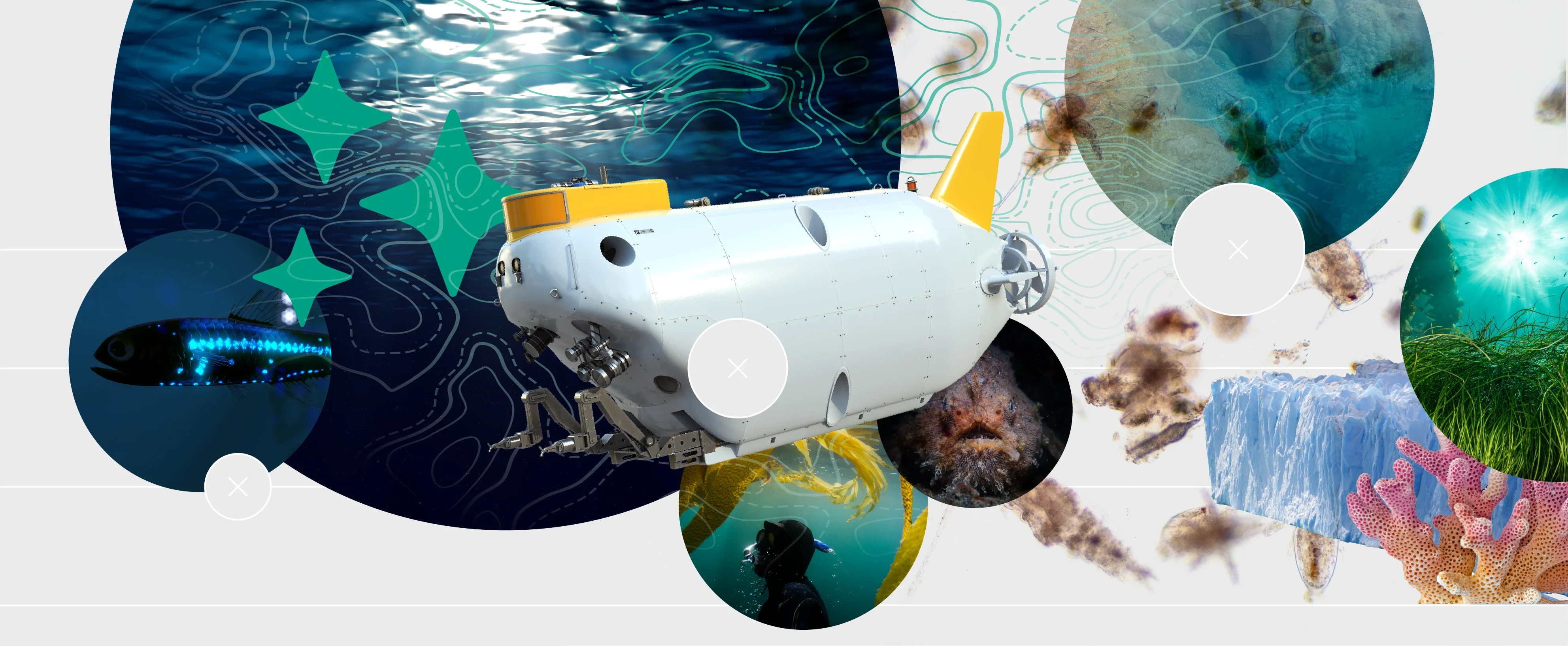Future Horizons:
10-yearhorizon
Multi-year studies expose deep-ocean trends
25-yearhorizon
Machine learning and other emerging technologies inform marine ecosystem conservation
Increasing exploration of the deep-sea water column and sea-floor substrate — by submersibles, robotic vehicles and other methods — is revealing complex ecosystems unlike anything at the surface. Hydrothermal vents are emerging as major contributors to the overall marine ecosystem.34 Researchers are finally able to explore the microbes living in oceanic crust,35 revealing hidden ecosystems shaped by magmatism and water-rock interactions.36 Some marine microbes perform metabolic processes, such as degrading petrochemicals,37 and genetic information from deep-sea microbes and from sponges has aided the development of antiviral drugs and rapid testing for COVID-19.38 Marine genetic resources (MGR) represent a large, and mostly untapped, source of potentially useful substances.39 However, the open-water pelagic zone (including the dark ecosystem), the largest habitat on Earth, remains under-explored.
A key challenge is to determine the fluxes of carbon and other nutrients through marine ecosystems, enabling us to track the carbon budget of the oceans40, including the deep ocean41, and their ability to remove carbon from the atmosphere.42 Autonomous platforms can help monitor these biogeochemical processes.43 Behaviours such as deep diving by large predators like sperm whales are crucial to these fluxes.44
Available data on ecosystem function covers less than the last 25 years. Attention has mostly focused on a handful of charismatic groups: notably shallow-water corals, the decline of which is fairly well-documented.45 Expanding this longitudinal tracking to other species, including in the deep sea, will be crucial for tracking ecosystem responses to climate-driven changes such as ice-shelf collapses.46 It will also be key for planning how we use and conserve marine ecosystems.47
Ecosystem functions - Anticipation Scores
The Anticipation Potential of a research field is determined by the capacity for impactful action in the present, considering possible future transformative breakthroughs in a field over a 25-year outlook. A field with a high Anticipation Potential, therefore, combines the potential range of future transformative possibilities engendered by a research area with a wide field of opportunities for action in the present. We asked researchers in the field to anticipate:
- The uncertainty related to future science breakthroughs in the field
- The transformative effect anticipated breakthroughs may have on research and society
- The scope for action in the present in relation to anticipated breakthroughs.
This chart represents a summary of their responses to each of these elements, which when combined, provide the Anticipation Potential for the topic. See methodology for more information.



